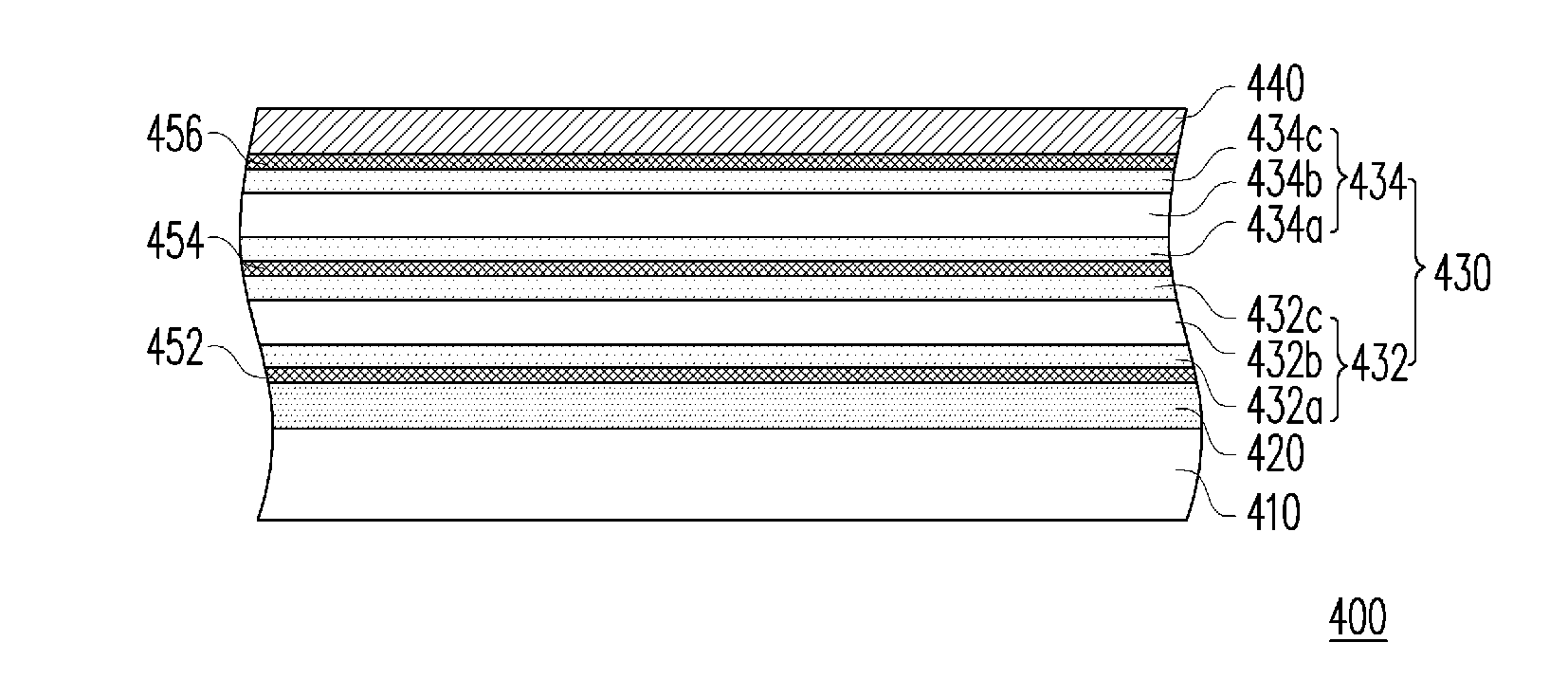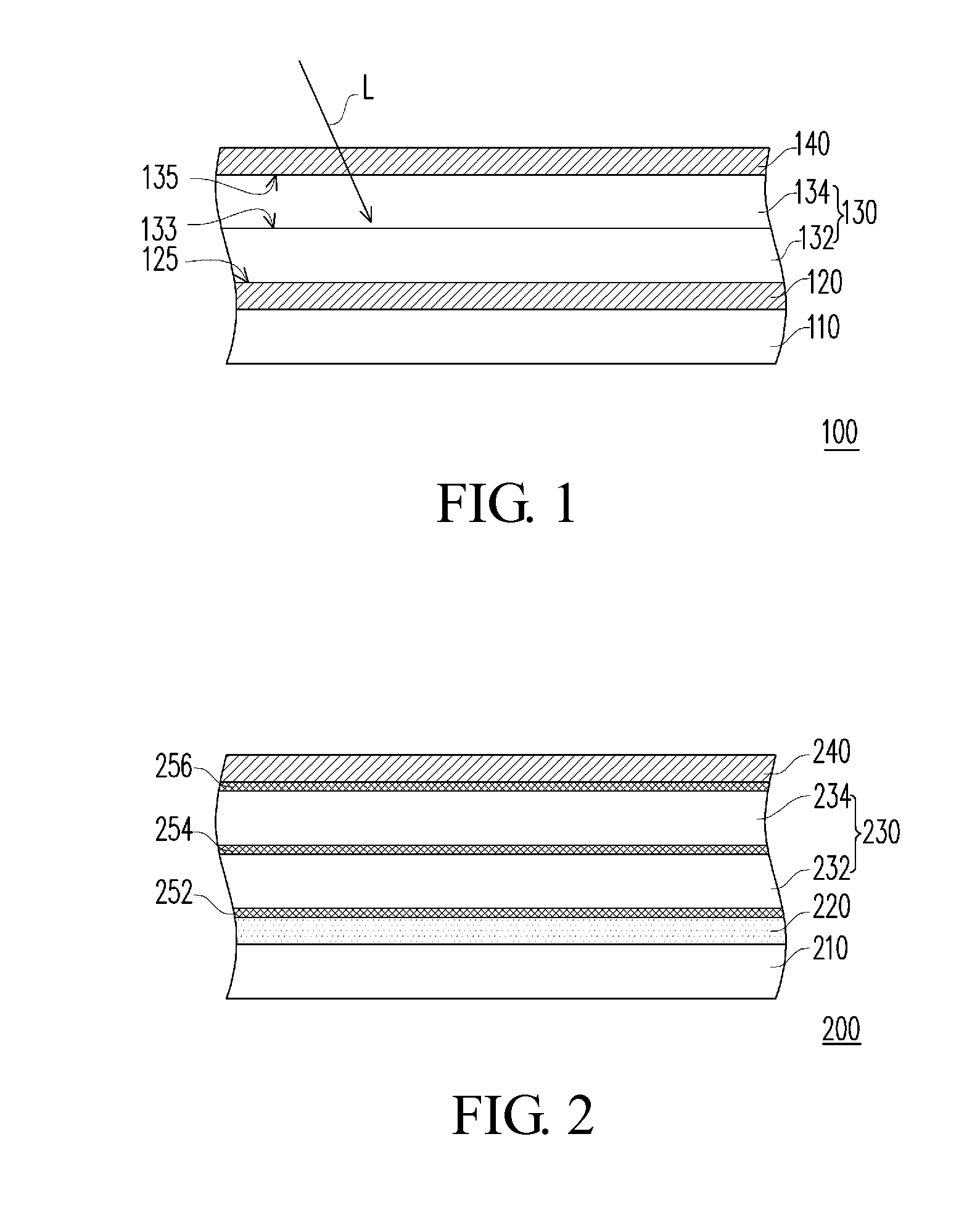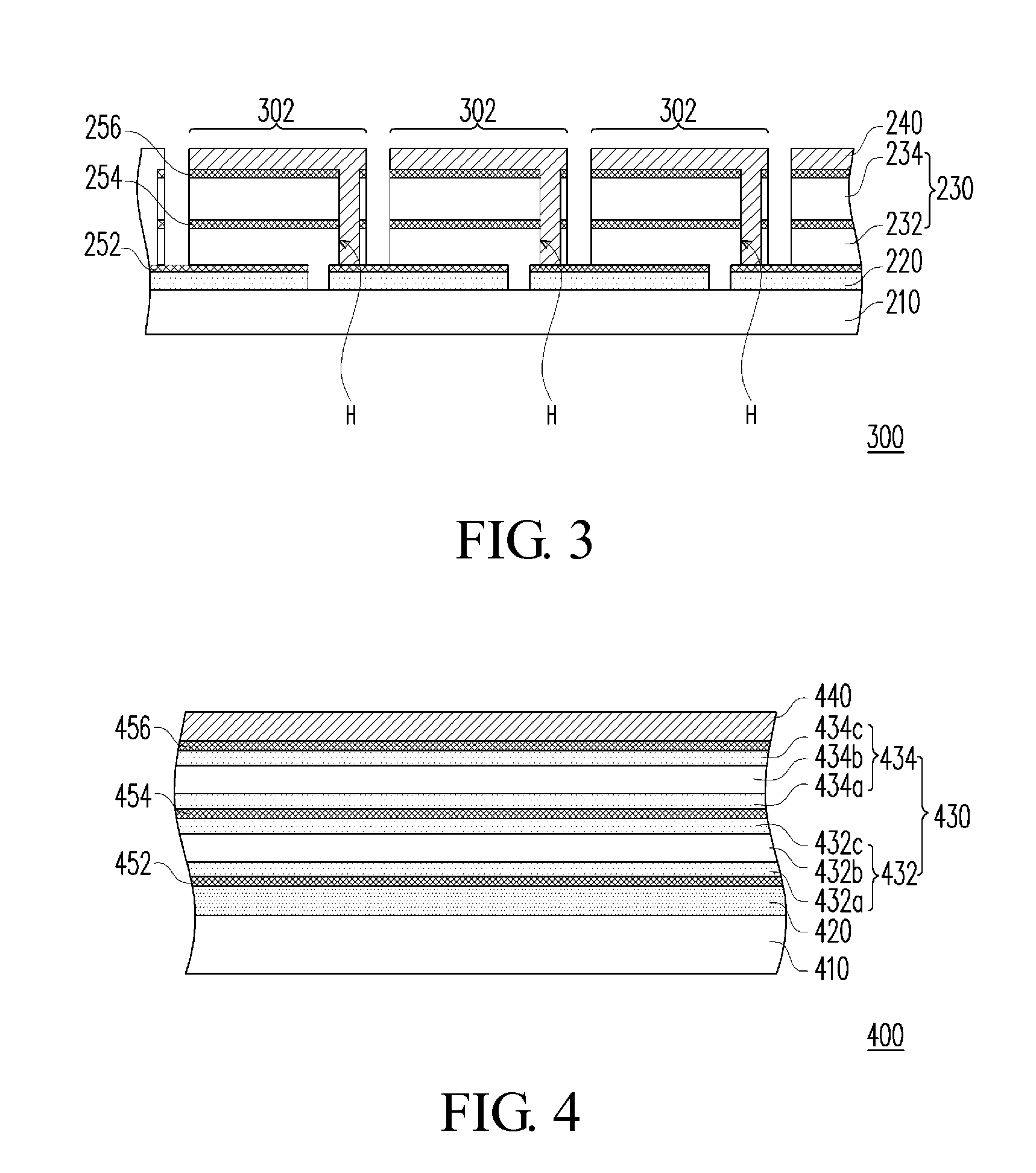Solar cell and manufacturing method thereof
a technology of solar cells and manufacturing methods, applied in the field of solar cells, to achieve the effect of improving photoelectric conversion efficiency and reducing the chance of surface recombination
- Summary
- Abstract
- Description
- Claims
- Application Information
AI Technical Summary
Benefits of technology
Problems solved by technology
Method used
Image
Examples
Embodiment Construction
[0039]FIG. 2 is a schematic view of a solar cell according to an embodiment of the present invention. Referring to FIG. 2, the solar cell 200 comprises a substrate 210, a first conductive layer 220, a photovoltaic layer 230, a second conductive layer 240 and passivation layers 252, 254, 256. In this embodiment, the substrate 210 is, for example, a transparent substrate such as a glass substrate.
[0040]The first conductive layer 220 is disposed on the substrate 210. In this embodiment, the first conductive layer 220 is a transparent conductive layer, which may be made of at least one of zinc oxide, tin oxide, indium tin oxide (ITO), indium zinc oxide (IZO), indium tin zinc oxide (ITZO), aluminum tin oxide (ATO), aluminum zinc oxide (AZO), cadmium indium oxide (CIO), cadmium zinc oxide (CZO), gallium zinc oxide (GaZO) and tin oxyfluoride.
[0041]The photovoltaic layer 230 generates electron-hole pairs when being irradiated by a light ray. The photovoltaic layer 230 is disposed on the fir...
PUM
 Login to View More
Login to View More Abstract
Description
Claims
Application Information
 Login to View More
Login to View More - R&D
- Intellectual Property
- Life Sciences
- Materials
- Tech Scout
- Unparalleled Data Quality
- Higher Quality Content
- 60% Fewer Hallucinations
Browse by: Latest US Patents, China's latest patents, Technical Efficacy Thesaurus, Application Domain, Technology Topic, Popular Technical Reports.
© 2025 PatSnap. All rights reserved.Legal|Privacy policy|Modern Slavery Act Transparency Statement|Sitemap|About US| Contact US: help@patsnap.com



